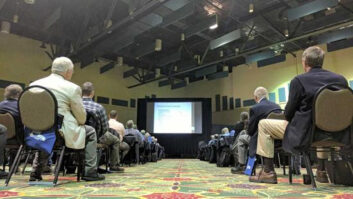WASHINGTON � The Federal Communications Commission public notice to review all media regulations is drawing the interest of radio broadcasters and advocates. The Modernization of Media Regulation Initiative seeks to eliminate and modify rules that are outdated and burdensome for media companies.
In May, the FCC issued the inquiry hoping such changes could spark investment in the media marketplace and drive innovation. Most of the opinions recorded so far clearly push for the commission to aggressively put a fresh pair of eyes on old media regulations. However, the suggestions vary widely.
Blackbelt Broadcasting, a licensee of several small market FMs in Alabama, wishes the FCC would further relax FM translator ownership rules to allow the primary station to own a translator beyond the current restrictions (60 dB coverage area). In addition, �we respectfully request that the current proposed regulatory fees (and structure) be reevaluated, reduced, or waived for certain classes of small market radio stations based on size class, and (or) revenue. We ask you to consider the burden that increasing regulatory fees has on many small rural AM and FM broadcasters,� Blackbelt commented.
Aaron Read, a commenter from Rhode Island with 20 years of broadcast engineering experience, is �in favor of continuing to allow FM translators to rebroadcast DAB (HD Radio) multicast channels (e.g. HD2, HD3, etc.), but for situations where the FM translator has the same owner as the primary station being translated, then the FM translator counts towards the ownership cap in that market. This is another case where owners are circumventing the spirit of ownership caps by using HD Radio and FM translators to effectively dominate a given market.�
Some commenters made technical arguments while others propose legal resolutions in the interest of fairness. �I propose to amend the FCC regulation, Section 73.404 Interim hybrid IBOC DAB operation, to formally and specifically allow low-power FM stations, FM translators and FM boosters to also broadcast using the same IBOC DAB standard, also known as HD Radio, that full-power FM stations do,� says Robert E. Lee, president of QXZ MediaWorks LLC in Corpus Christi, Tex. �I believe, for many broadcasters, that it�s inconsistent, from technical and listener service standpoints, to allow a full-power, parent FM station to broadcast in IBOC DAB, but not the FM booster or FM translator that is fed programming by the parent FM station.�
Matthew Wesolowski, CEO of SSR Communications Inc., seeks the FCC�s attention to what he believes is an outdated rule banning radio stations operating in states without a state lottery from accepting out of state lottery advertisements.
>�SSR is the licensee of WYAB 103.9 FM at Pocahontas, Miss., which is located in one of four states in the United States that do not administer a government-operated lottery. As such, the commission currently prohibits WYAB from running lottery advertisements from neighboring states, as there is no such lottery program in its home state. WYAB airs network sports programming based out of three neighboring states: Georgia, Tennessee, and Louisiana, all of which have lotteries and run out-of-state lottery advertisements on their broader sports networks. As WYAB must �cover up� each lottery announcement, some of which are �live reads� that are difficult to predict, there is a tremendous burden placed upon SSR to stay in compliance.
Commenter Ryan Johnson from Milwaukee, Wis., asks succinctly: �Public file � nobody uses it, can we get it eliminated? Fax-on-demand FCC Service (202) 418-2830. Really? In 2017? Use the internet.�
Not surprisingly low-power FM advocate REC Networks has proposed rule changes that could increase opportunities for LPFM radio stations and bring them a level closer to FM translator status. Among them �expanding the ability for LPFM stations to use directional antennas, redefinition of the third-adjacent channel periodic announcement, elimination of some restrictions on LPFM-owned translators, the ability for LPFM stations and cross-service (AM) translators to construct FM boosters within their current service contours, an extension of the construction period from 18 to 36 months, expanding the distance that LPFM stations can move, making the use of LP on call signs optional and adding rules to require FM translators to protect LPFM second-adjacent channels.�
>Meanwhile, Tyler Russell, program director at KXRN(LP), wants the FCC to allow more collaboration between two LPFMs. �KXRN(LP), broadcasting in Laguna Beach, Calif., is a successful radio station with 100+ volunteers, five full-time staff, and a dedicated listener base in our community. We are neighbored to the north by Newport Beach/Costa Mesa, which also has an LPFM � KOCI(LP). Newport Beach residents and Laguna Beach residents are interested in similar news, local happenings, and public affairs programming. We believe we could better serve both communities by teaming up.�
FCC Chairman Ajit Pai continues to push forward the need for FCC rules to reflect the needs and structure of the current market. Pai wrote the following in the FCC�s Public Notice: �We want to figure out whether and how to update our rules to match the realities of today�s marketplace. We aim to get public input on which rules are still necessary and which should be modified or eliminated. We want to modernize our rules in order to better promote the public interest and clear a path for more competition, innovation, and investment in the media sector. This is simply good government.�
The comment deadline for MB Docket 17-105 is July 5; the reply comment deadline is Aug. 4. You may comment electronically via the commission�s ECFS system.
A version of this article was originally posted on RadioWorld.com.
�
�










